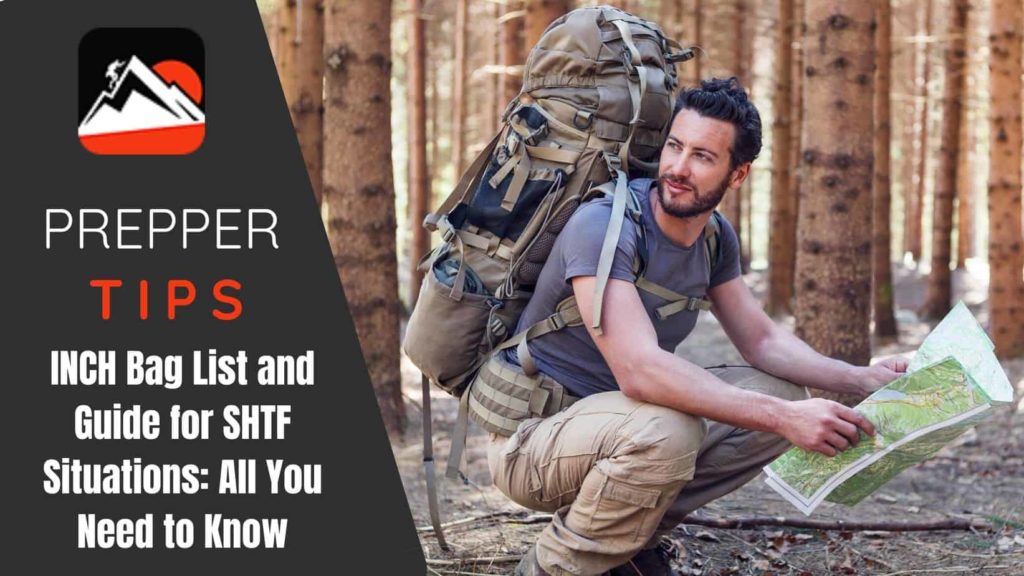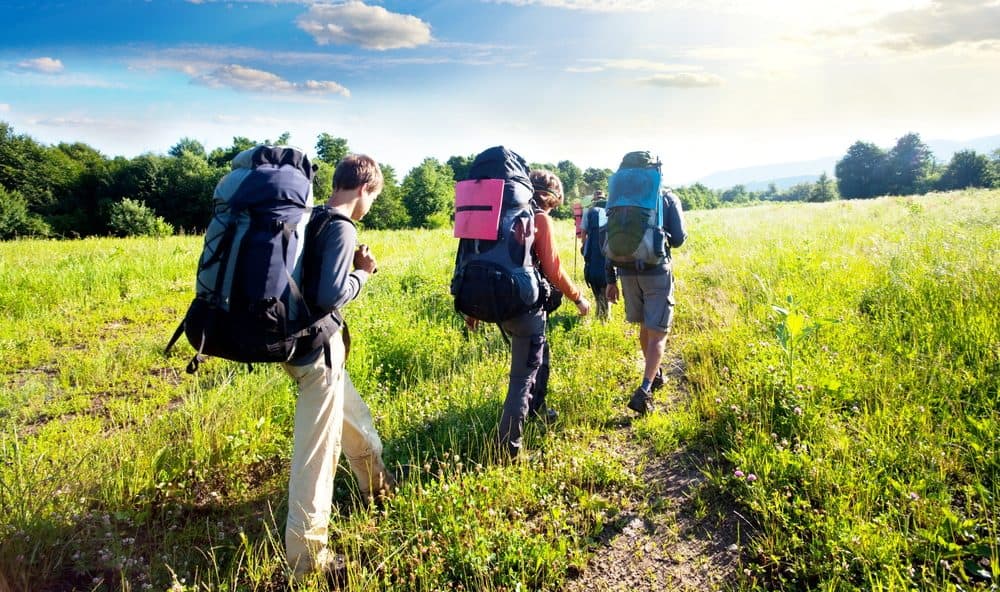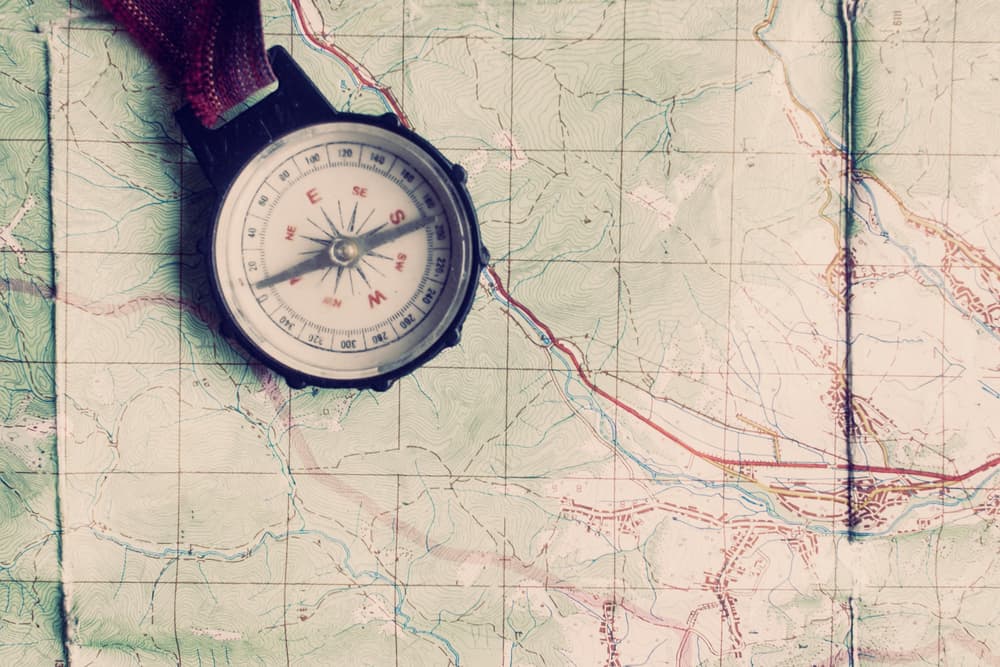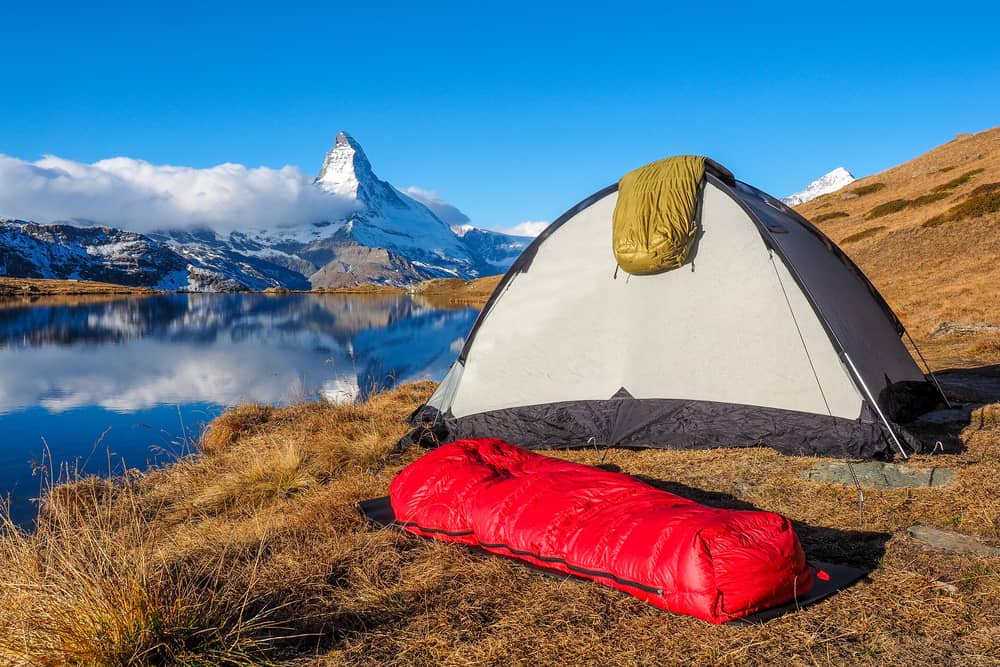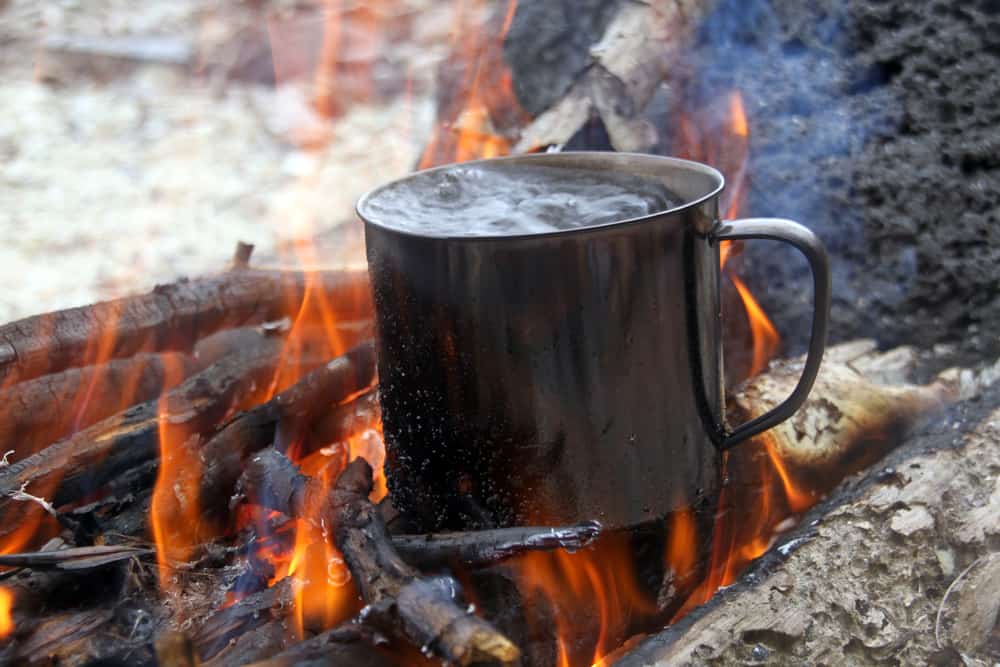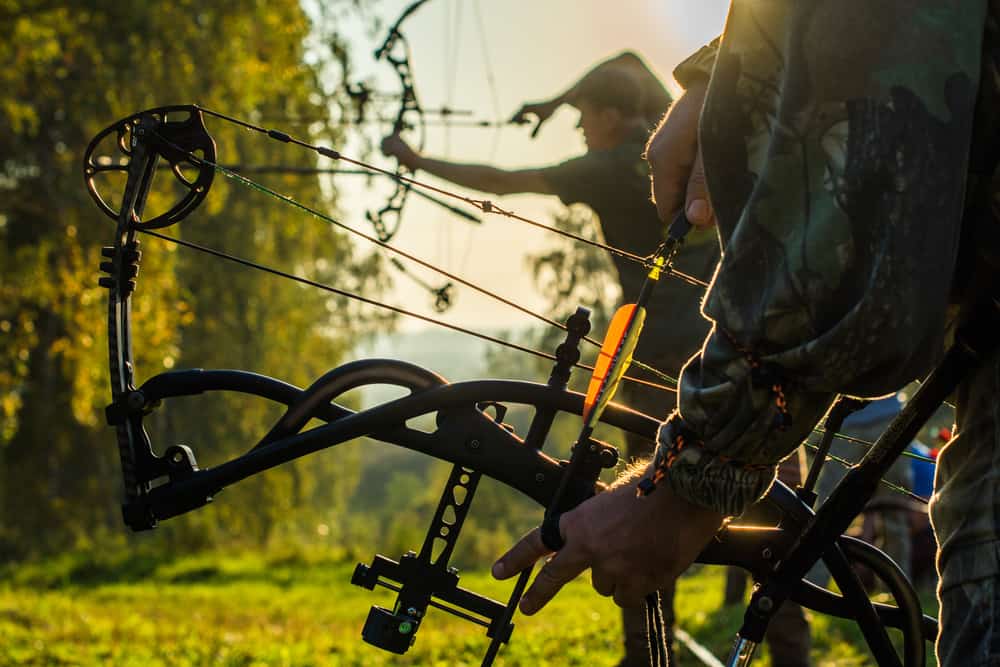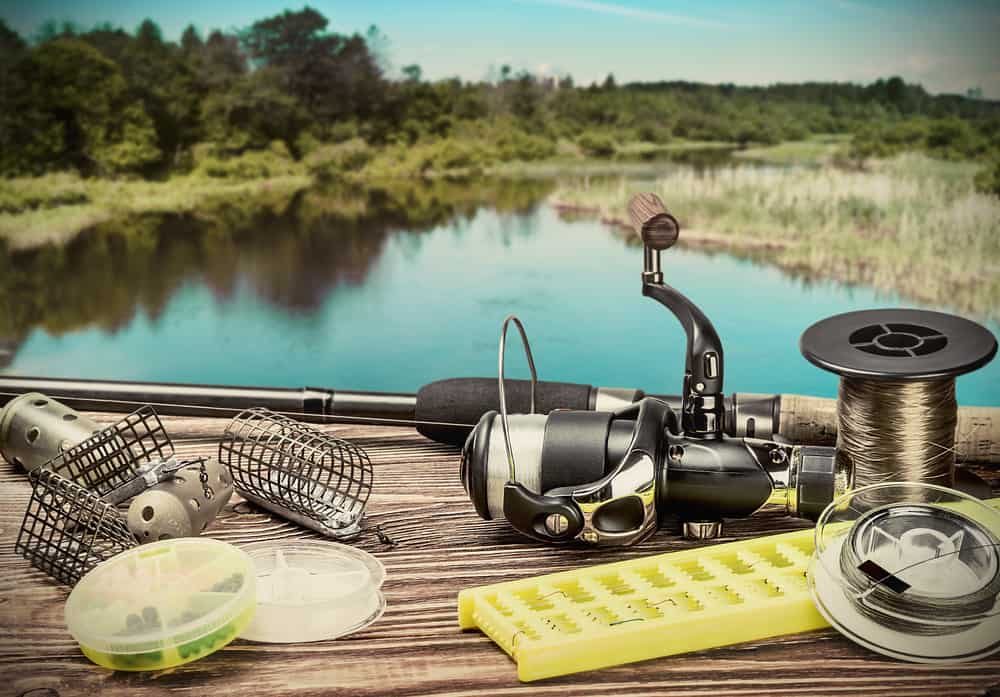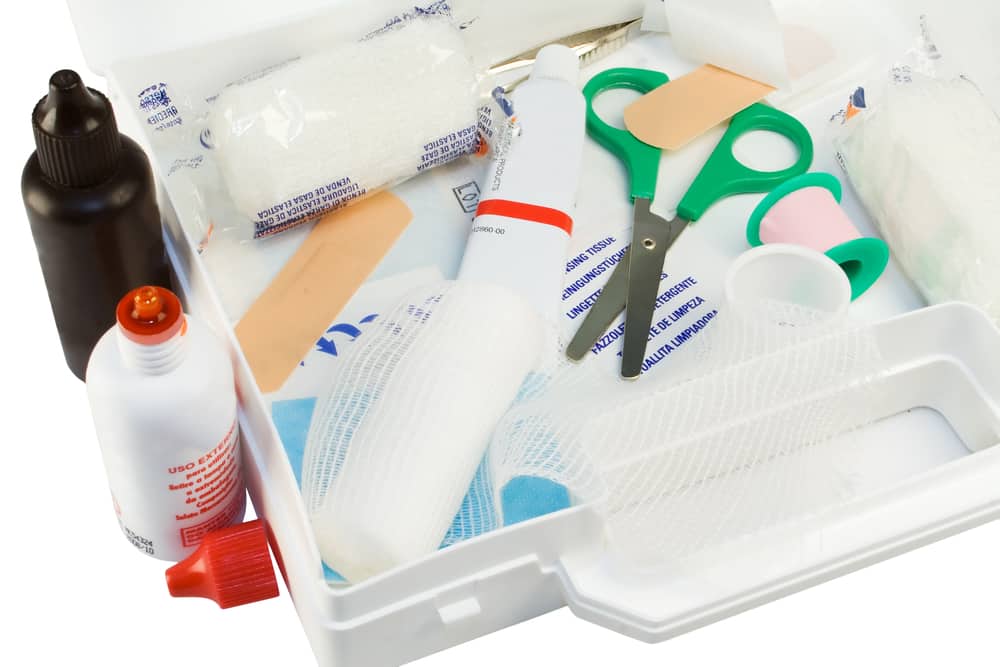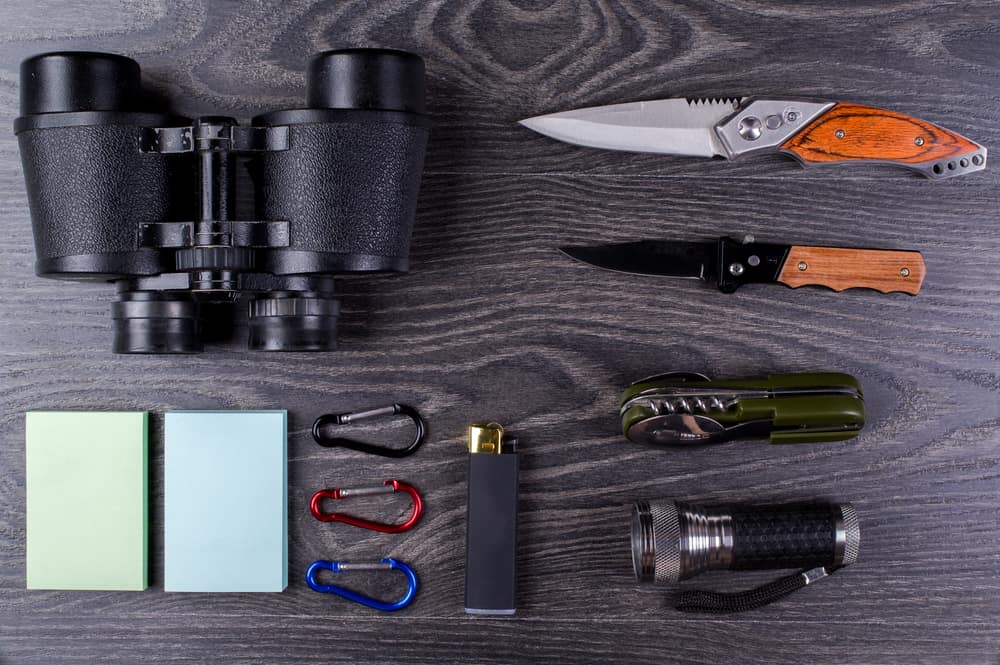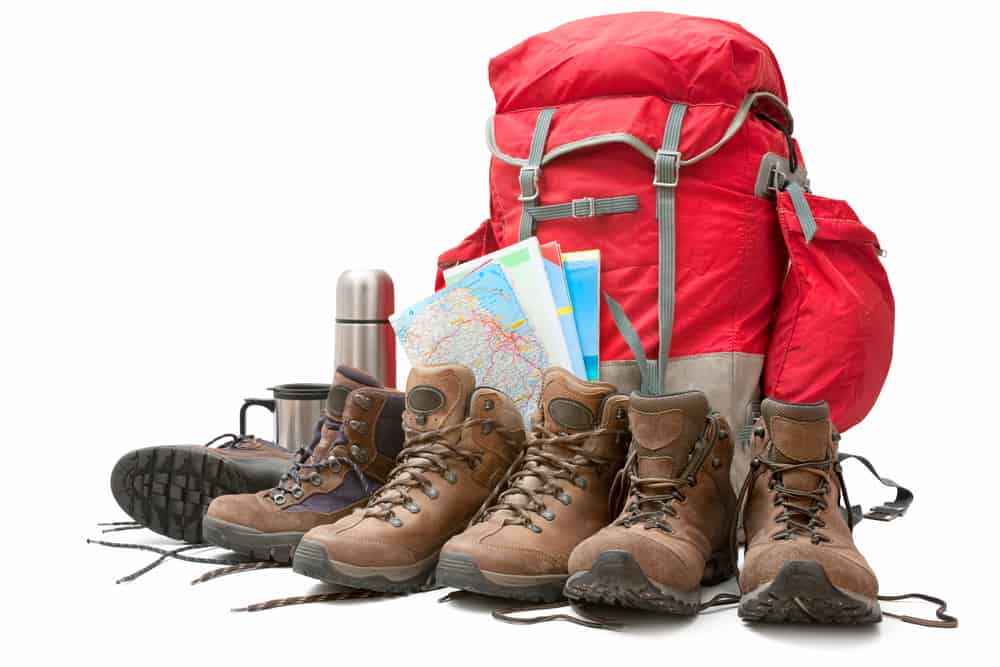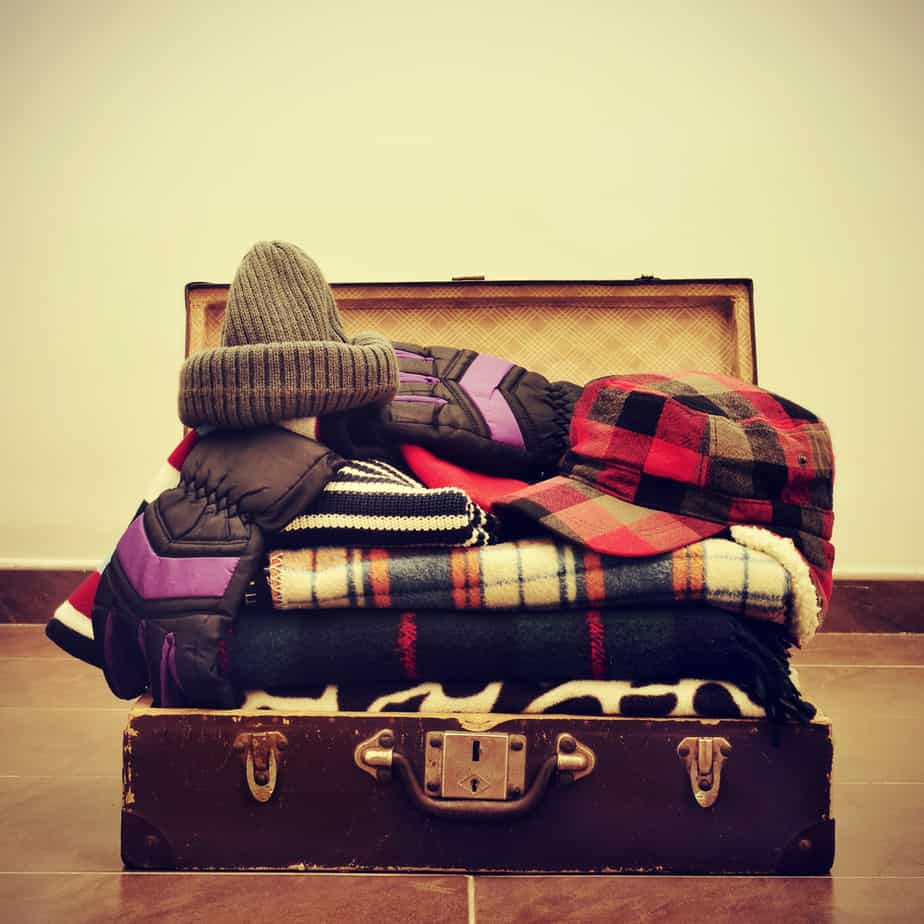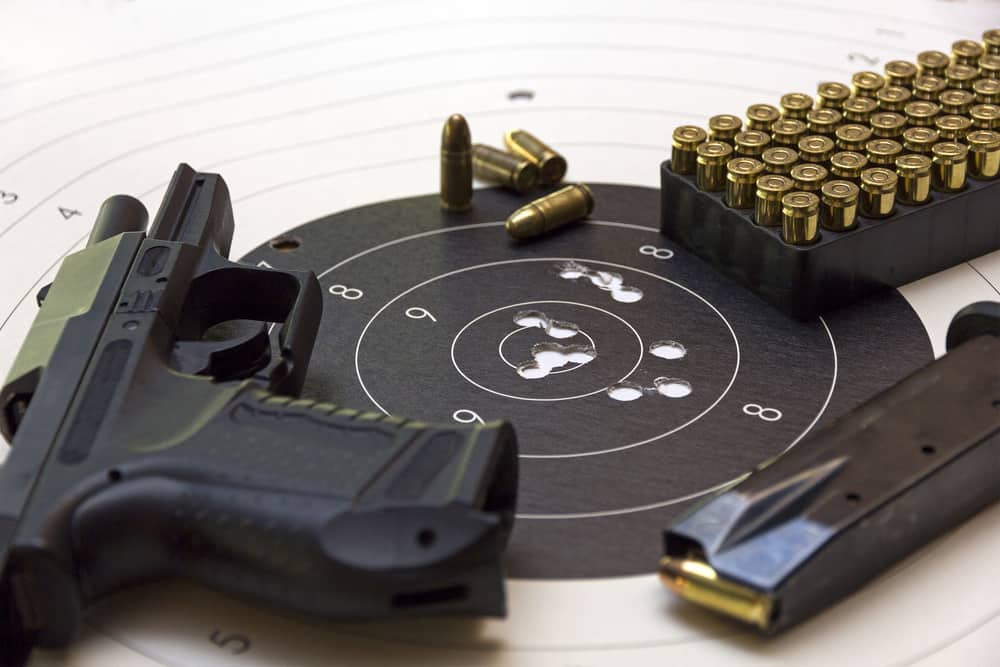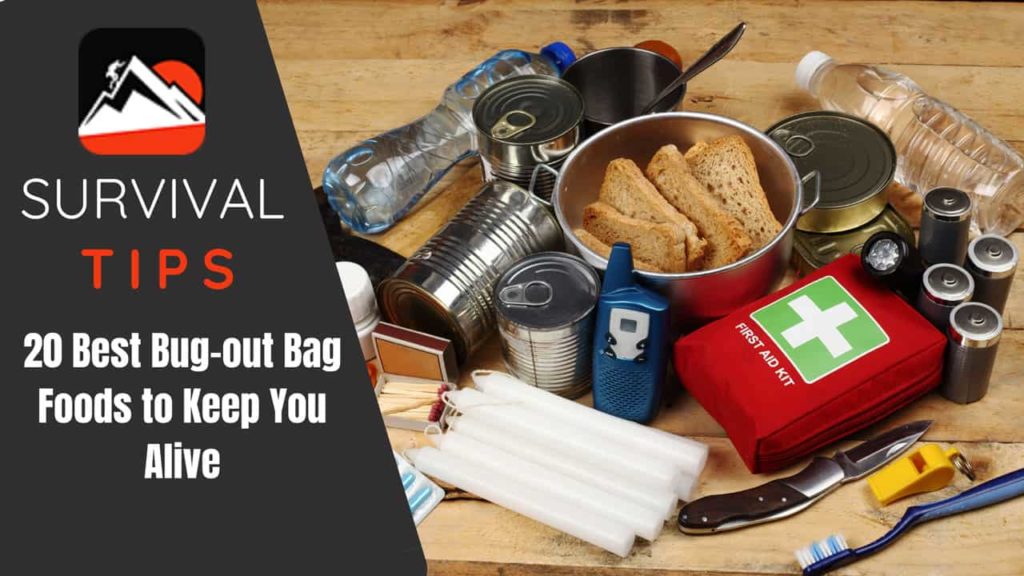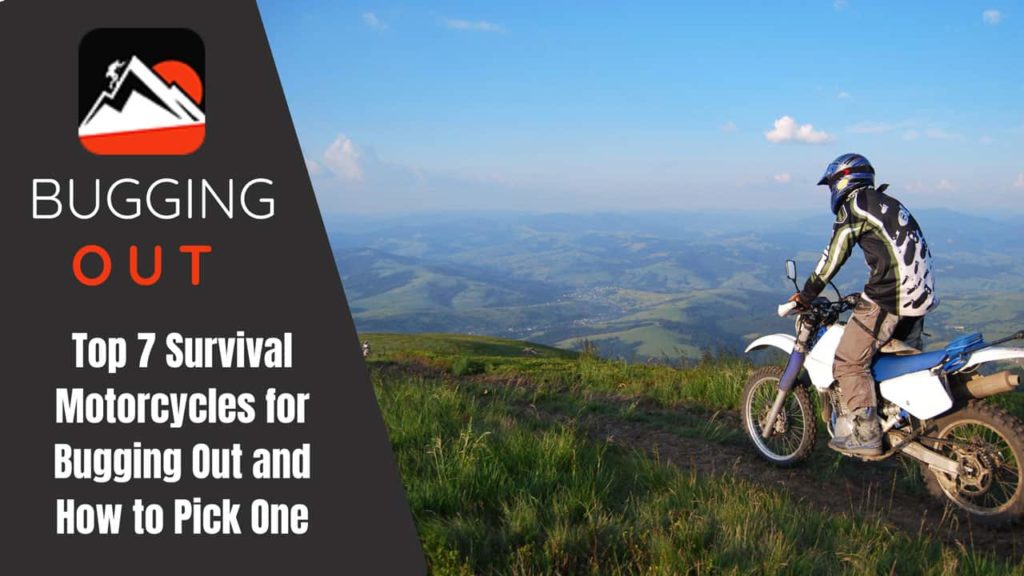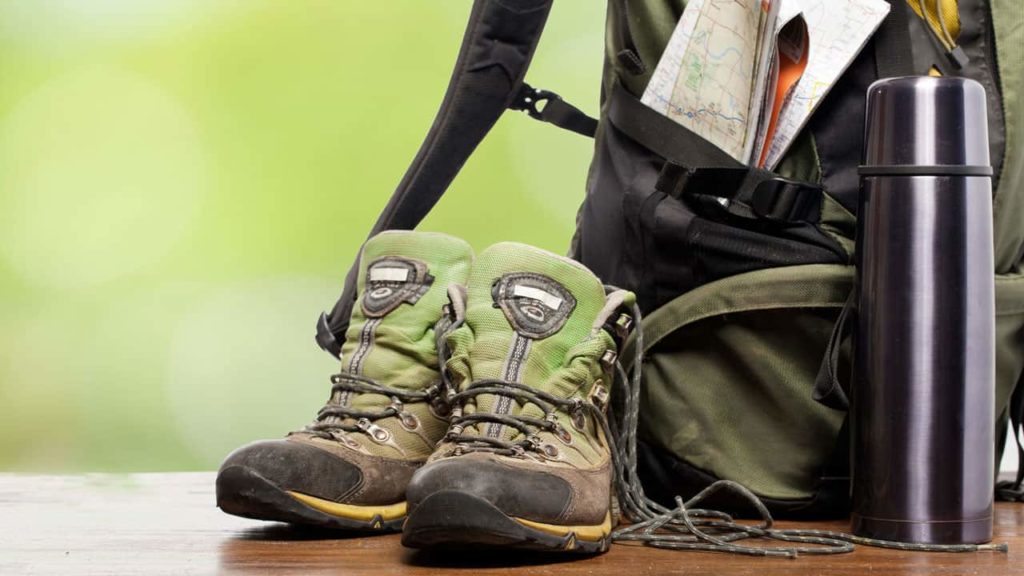Contents
“INCH” stands for “I’m Never Coming Home”. Crisis or not, you will still need basic supplies to live.
There is a big difference in the things you need to live in a city vs in a wild setting. For example, you won’t do very well at all if you have fishing gear in the middle of a city. By contrast, a cell phone with robust mapping apps makes a lot more sense.
Some survival items are useful in all settings. An Inch Bag is only for places far away from other people.
What is an INCH Bag?
Inch Bag refers to the bag or carrier for your supplies. It is meant to be used daily to meet your needs in the wild. You should not need to go near another person or go to a store for at least 6 months.
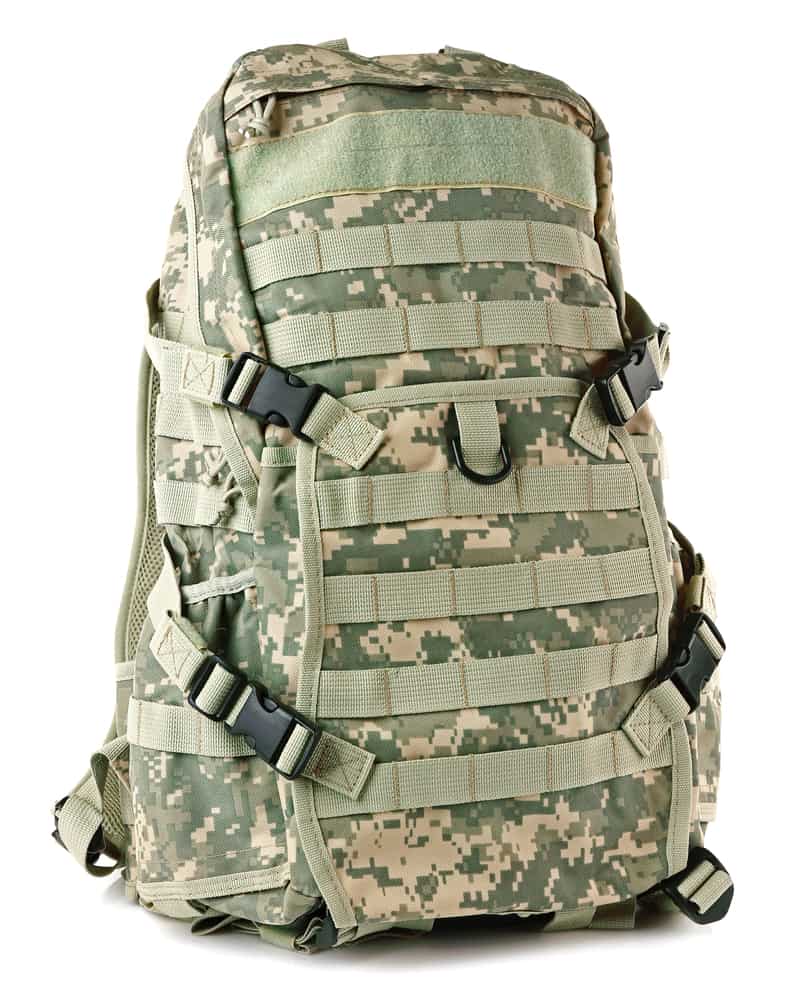
If you look at stores dedicated to hunting or fishing, there are endless things to buy. This also holds true for camping gear. There is no way to fit even a fraction of these items into an Inch Bag. Trying to achieve that goal is not even necessary.
Across time, our ancestors have made do with very little in natural settings. You can repeat their success, but it will take time. You will also have to adapt to a very different lifestyle.
While many items in the pack are for food gathering and cooking, there are other items too. When you look at the list of items, you are likely to say there is no way you can carry it all. An Inch Bag is not meant for just one person. Ideally, you will travel with several people.
Who Needs an INCH Bag?
You need an INCH bag if you plan to live away from people for a very long time. Most of the gear in them will not work for urban survival. While some items overlap a bug out bag, there are also some key variances.
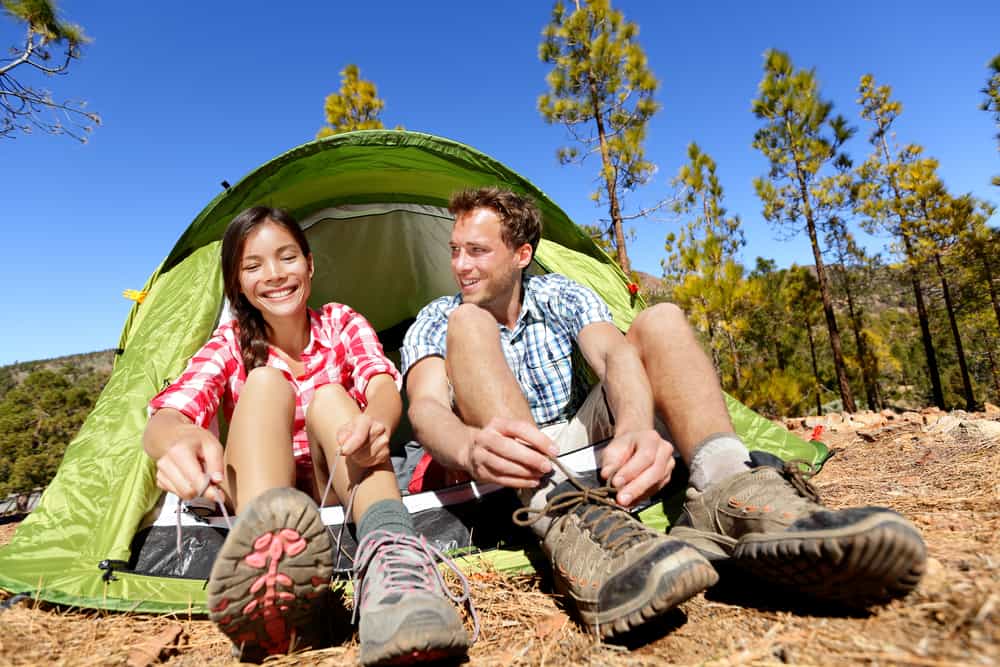
Here are some things that indicate you need an INCH bag:
- You have already spent several weeks at a time camping.
- During camping trips, you lived fully off the land for food, water, shelter, and medicine.
- Your skills have been honed over the years, not just weeks or months.
- You are always learning new outdoor skills and practicing.
- You camped in many areas. This includes coastal, desert, and jungle. You should also have experience in hot and cold weather.
- You camp with a group of people that you trust and get along with.
- All of the people in your group agree to live away from others for a long time.
- You are successful in teaching others basic rustic skills. The best test of your own ability is when someone else can duplicate your success.
You might also find interesting our article about what to pack in a get-home bag.
INCH Bag Weight
Most people will tell you that an INCH Bag should weight about 50 pounds. I tend to say you will carry closer to 140 pounds of supplies and tools.
If you are traveling with at least 4 people, you can divide the weight among several bags. This brings the weight down to 35 pounds per bag without sacrificing important tools.
Weight isn’t the only thing you should think about. The size of each INCH bag is also critical. It is better to choose a bigger, sturdier bag and have extra room.
You never know if you find a wild medicinal plant or something else that will be of use. At least, if you have a bag with some room, you can pack some seeds from the plant, or a cutting.
As useful as multi-purpose items are, they are of no help if they break. It is best to have single-purpose tools. By contrast, it is good to have multi-purpose supplies. Just be sure to pack extra so you have enough for each task.
There are also some things that every person should have in their pack. Allow about 10 pounds per pack for duplicate tools. This covers redundancy and also ensures a basic minimum supply for each person.
INCH Bag vs Bug-Out Bag: The Difference Between Them
Many people think they are the same. They have similar goals, but one cannot replace the other.
- A bug out bag has a wide focus. You may have to go through urban areas as well as natural ones. An Inch bag is only for use in natural settings.
- A bug out bag is for short term use. You may have a lot of disposable items in it. By contrast, you may use an Inch Bag for months to years.
- Usually, a bug out bag has enough food and water to last a few days. You will carry far less of these items if any in an inch bag. Instead, the inch bag gives you the tools to get food and water.
- A bug out bag is for just one person. Even if you are traveling with a group, each person will have their own bag. You will share an inch bag with several people.
- You can keep a bug out bag in your vehicle. An inch bag is meant to be your “home away from home”. It is not meant to be used as an emergency bag.
- Bug out bags usually weighs around 25 pounds. An inch bag can weight a minimum of 50 pounds.
- I like to think of an inch bag as a collection as opposed to a single bag. A bug out bag is usually just one bag.
Building a Solid INCH Bag Action Plan
Before you start buying things, it is vital to make sure you pick the best tools and supplies. If you do not plan and shop carefully, you will not have an inch bag that works well for you. Here are the basic steps for building a solid inch bag:
- Know who is traveling with you. This will make it easier for you to work together to choose and buy items.
- Make sure you know the needs of every person in the group. This includes medical needs or anything else that might need to be accounted for over a long period of time.

Even though a basic inch bag is very specific in its contents, there is no reason why you can’t customize some things. For example, if someone has wrist or shoulder problems, you can add support gear for that person.
- Create a basic category list. You can use the checklist in this article as a starting place.
- Make a detailed list for each category. The list in this article is a good place to start. Take this list and use it to research products and brands.
- For each item, list models, warranty information, reputation, features, and cost
- Research Inch Bags and Camping Gear. The more you look, the better chance you have of finding what you need.
- Go back over your item list and adjust as needed based on your research.
- At this stage, you will need to work out a budget. This is also the time to decide how to split duties.
Unlike a short-term camping trip, each member of a long-term venture must have specialized and reliable skill sets. For example, one or two people may be better at hunting. Someone else may have outdoor medicine skills. Yet another person may be specialized in building shelters or navigation.
It will be up to your group to decide how to trade-off between skills and financing. When you are done, put everything into a written contract. Later on, you may have to resolve disputes and will need these documents.
- The next steps will take both time and money. First, you will begin to buy items on your list. Next, you will have to test them out with your group.
- Test out different items that you buy in short to mid-length camping trips. Be sure to try out the gear in different climates and seasons. Personal experience is essential.
- Next, each person should take time to practice with each item in the bag. If you find something that doesn’t work well or breaks, look for another tool.
Take your time with this step. The items in the bag may have to last for many years under rough conditions. It is better to make changes now instead of pay with your life later on.
- Once you know everything works, it is time to pack your inch bag and get ready to travel.
You might want to also learn about how and what to pack in a bug-out bag.
How to Choose an Inch Bag
The bags you choose for INCH gear are very important. Here are the key elements that each bag should have:
- Comfortable – you will be carrying the bag in good and bad weather. You may also have rough ground and other issues.
The bag should prevent moisture build-up along your back. It should also have padded straps.
- Sturdy – material and stitches must be of high quality.
- Expandable – it helps to have a bag that can contract as supplies are used. You should also be able to add small pouches on the outside.
- Water Proof (optional) – never trust the bag to remain waterproof. Zippers and seals can wear. Instead, make sure everything is packed in waterproof bags or boxes.
I would also like to note that not everyone has the same ideas about what makes a good Inch bag. There are two things I don’t recommend:
- Bags with Casters – these wheels are too small to go over grass or rough terrain. Think about how easy it is to stump a rolling office chair.
- Hard Truck or Tool Boxes – these do fine in a truck or vehicle. You will have a very hard time carrying them in the wild.
Best 3 Inch Bags:
Outdoor Plus Backpacking Backpack, 60L/65L/70L/85L Waterproof MOLLE Rucksack Hiking Hunting

This is a mid-weight bag that is roomier than it looks. Its shape lends itself well to packing clothes and other items that are easy to compress. The zipper system makes it easy to get into every part of the bag.
There are also small pockets for things you want to reach right away. You can also use this bag for cooking gear and other heavy items. If you decide to bring a shotgun, this bag will work well. It can carry well over 50 pounds. The only limit is your own strength.
Aside from the main bag, you can also extend in 4 directions. The MOLLE system is all over the bag. It is strong enough to carry other attachments that are the same size as the central bag. You can also carry a tarp and other items with ease.
Sierra Designs Flex Capacitor Backpack, Adjustable 60-75L Volume Ultralight Backpacking Pack with Y-Flex Suspension System

Some people think this bag looks frail. It is very sturdy and lightweight. It also has a rail system that makes it easier to carry.
The Flex Capacitor is one of the most expandable you can buy. It is also very easy to collapse. When you empty the bag, it is very easy to store away.
From there, you can always fill it again with things you gather along the way. This might include tools you make from tree branches or herbs for medical needs.
This makes it perfect for supplies you will use and not replace. Since it is easy to open and close, it makes a good group use bag. Cooking supplies, duct tape, and daily use items will go well in this bag.
Eastsport Tech Backpack, Army Green

This bag isn’t expandable. It is my personal favorite just the same. I have easily carried 30 to 50 pounds in this bag model.
The zippers have yet to fail in over a decade of use. I have seen other bags fail at the seams and more, but not this one.
Over the years, it has remained in good condition. The Eastport Tech Backpack is very easy to maintain and keep clean. I have thrown it in the washing machine, sprayed it down with Lysol, and much more.
The other main drawback of this bag is it does not have a rail system. It is still perfect for use with specific groups of items. For example, it is ideal for carrying medical supplies. You can also use it for tools, books, and electronic devices. If you have people in your group that are short, this is a good bag to go with.
INCH Bag Checklist
Navigation
You will always need to know where you are and where you are going. This will not change even when you reach a place where you can live on a steady basis.
Here some vital tools you should always have. Buy from a reputable and reliable manufacturer.
Compass – There are many different kinds of compasses. The two I recommend most are:
- A Base Plate Compass with a mirror and magnifying lens. You can use these with maps, to start fires, and to signal.
- Pocket Transit Compasses are very expensive. They are still the most accurate and give you more options.
Wind Up Watch – You can use a watch to navigate by the sun and as a compass in a pinch. The watch must have a regular face dial and not a digital display. Choose one that doesn’t take a battery.
Hourglass – Even the best wind up watch can wear out. You will still need to estimate the passage of time for sun navigation. An hourglass will never wear out. Choose a plastic one that will not break.
There are two useful intervals:
- 15-minute timer – put marks in for every 5 minutes.
- 1-hour timer – put marks in for every 15 minutes.
Maps – detailed topographical maps will be useful if you only intend to travel in 1 or 2 areas. An atlas will be of some help if you have to leave the area.
Shelter
More than a few people say you should carry a tent. There are many problems with this idea.
- First, you will only use the tent for a short time. Once you reach your target area, you will build a permanent shelter. You can also build temporary shelters as you go along.
- Second, even one pound of extra weight is a lot when you are traveling for days on end. Do not forget that your feet, back, legs, and arms can only take so much.
You must make every ounce count in an inch bag. If you aren’t going to use it for the next 5 years, it should not be in the pack. The only exception is a few supplies you will need to get started on your journey.
- Third, even a compact tent can be bulky. You will need that room for other things. This includes extra knives, medical supplies, or other things. Look at the size of a tent you would take along. Now, look at the other things you could put in its place.
Here are some shelter related items you should have. Some also serve other purposes:
Tarp – can be used to capture water, block off land to be planted, and many other things.
Sleeping Bag – make sure the bag is waterproof. It should also keep you warm in temperatures to -30.
Fire
Being able to start a fire is vital for every area of survival. Do not rely on just one way to start a fire. The more tools you have to start a fire, the better. Here are some items you should have in your inch bag:
Magnifying Glass – even if your compass has a lens, it never hurts to have a spare magnifying glass. It will only work on sunny days. You will also need tinder cloth.
Ferro Rod – these will work in any situation, including wet weather.
Waterproof matches – these don’t take up much space and are good to have at the start of your journey.
Tinder cloth – very important if you can’t find dry tinder.
Shoe polish tin – drill some holes and it can be used as a smoker to make more tinder cloth.
Small candles – use to ignite wet tinder or damp materials. You can also use pine cones.
Mirror – will only work on sunny days. Still important to keep for fires and signaling.
Steel wool – can be used to clean shiny surfaces that can be used to start fires.
Dry wood for a fire bow – this method is time-consuming. If you have nothing else, it will still work.
Container for storing hot embers – keep embers onhand in case you have no other way to start a fire.
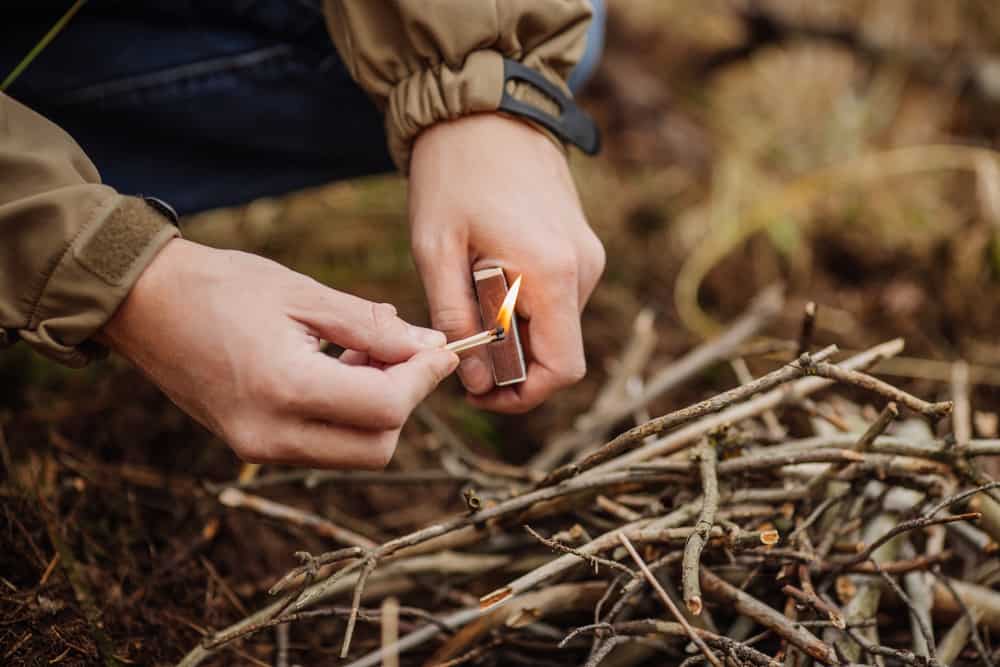
Cooking
Being able to cook food is vital for good health and avoiding illness. Right now your kitchen may be full of all kinds of gadgets. It takes only a few simple items to make healthy meals. Here are the cooking tools you should have in your Inch Bag:
Dutch Oven – should be able to double as a camp firepot.
Cast Iron Frying Pan – these never wear out and are easy to use.
Stainless steel cups, plates, and utensils – these are the most durable and will last a lifetime.
Burn proof pot holders – they will eventually wear out but are still vital until you make replacements.
Solar cooker – if you don’t have materials to start a fire, it may still be possible to heat up your food using the sun. Cardboard and aluminum foil can be used to make a portable device.
Some canned food – have enough for a few days. Save the cans to use as vessels for the solar cooker. You can make steamed bread in these cans as well as many other foods.
Black Paint – used to coat empty cans. Black vessels absorb heat better.
Towels – keep a wide range of towel textures and sizes. They will wear out, but at least you will have some to start with.
Screen or Fabric – Keep lightweight, easy breathe fabric on hand to make a solar dehydrator.
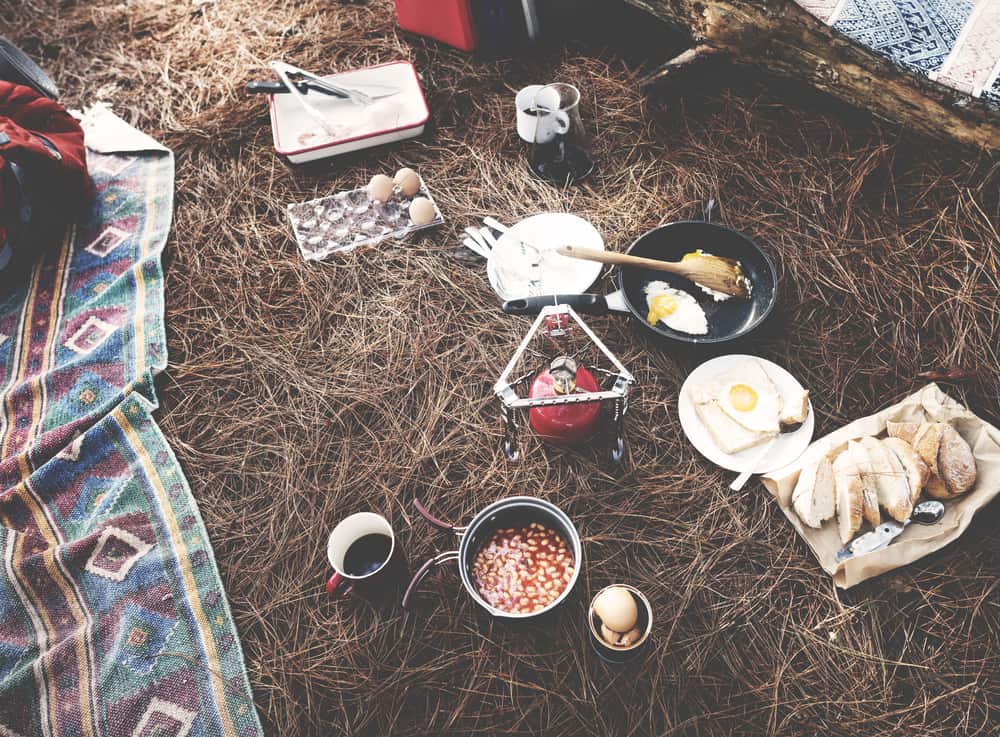
Water
You will need to be able to find and purify water from day one. Here are vital things to have on hand:
Water Bottles – Must be clear plastic so you can use the sun to kill germs.
Water Straws – each straw will clean a lot of water. Practice drinking from the straw.
Activated Carbon – It will get rid of most toxins in the water.
Bone Char – When you boil water it goes as steam and leaves heavy metals. This means more toxin is in less water. Bone char removes heavy metals.
Different Grades of Gravel and Sand – use to filter dirt and debris from the water.
Water Cleaning Polymers – Look for one that will filter out heavy water. Use only if you suspect a nuclear event.
Strainers (at least 10) – Media set in layers is important.
Lemon Juice – use to make new activated carbon
Water Still – use only in an emergency because water without minerals is bad for you. It will not get rid of heavy water.
Shovel – use to dig pits that you can cover with a tarp to get water as it evaporates from the earth. You can also put leaves in the pit to get water from them.
Hunting
As with water, food is too heavy to carry. It also takes up too much space. You will have to hunt or gather wild plants as soon as possible. Here are the tools you will need for hunting:
Survival bow – choose to recurve bow over a compound because it is easier to maintain. Test out different ones and make sure you know what you can hunt given the weight off of the bow.
Bow Accessories – make sure you have extra strings, a quiver, bow stringer, finger guards, and arm guard.
Arrows – keep several different sizes and designs. You should also pack extra arrow points that can be fitted to a shaft later on.
Thin rope or wire – use these to make snares and traps.
Kit for Dressing Game – Never let meat or other parts of an animal go to waste. Field dressing is key. The kit should have the proper knives and other gear to dress large and small game.
Binoculars – very useful if you are going to sit in a tree, or want to study the game at a distance.
Animal Calls – these devices mimic the sounds of animals and birds. Some animals will hear these calls and come right to you, depending on the species. If you are hungry and short on time, these can help save your life.
Fishing
If you are near a pond, river, or stream, there may be edible fish, turtles, or other creatures in it. Depending on the area, you may have better luck fishing than hunting. Here are some simple tools you should keep for fishing:
Cast net – can be used to capture edible fish as well as bait.
Fishing rod – get one with an auto reel. Even a good quality reel will wear out or break. Make sure you know how to make one from saplings.
Hooks, tackle, bobbers, and sinkers – keep plenty of each size and type in your inch bag.
Fishing line – be sure to keep large spools of different weights. The monofilament line will last a long time. Make sure you practice making lines from vines and using it to fish.
Mesh Screen – for making turtle and fish traps
Fish cleaning kit – A fish scaler and fillet knife are very important.
5 Gallon Bucket – There are many fishing-related uses for this bucket:
- Keep the fish alive until you are ready to preserve or eat them.
- Keeping smaller fish alive. Let’s say you are planning to stock a pond with fish. Or, you plan on using aquaponics to grow food.
Small fish from the wild may be a good choice. If you are near your target site, then it may be of use to get them while you can.
First Aid and Health
Even if you are very careful, you can get hurt in the wild. You can also get very sick. If you have existing medical conditions, you must also account for those.
Compression Bands – will help your muscles recover faster from a lot of work.
Bandages – keep compression bandages as well as smaller ones.
Tweezers – can be used to get rid of splinters, ticks, and other things.
Aluminum Splint – if you get a sprain or break a bone, these splints will save you time and effort.
Antibiotics – these are more of a short-term supply. Keep them on hand, but don’t forget about local plants.
Wound Repair Kit – make sure it has suturing material and a sewing needle.
Rubbing Alcohol and Iodine – use as sparingly as possible. Later on, you will need to make a disinfectant on your own.
Salt, Sugar, and Natural Honey – Each of these can clean wounds or help them heal. Later, you will rely on these items and herbs instead of iodine and rubbing alcohol.
Duct Tape – has many purposes. Pack a lot of it, but also make sure you know how to use vines and rope.
Essential Oils, Dry Herbs, and Seeds – Make sure you know how to grow and prepare herbs that are useful to you. These plants will take the place of many medical supplies once you settle into an area.
Tools
There are dozens of tools that you may find useful, but others won’t. For example, I always keep a ratcheting screwdriver kit onhand. Others might choose a cordless power tool. The tools below are just a starting point. You should aim for tools that don’t require electricity. Manual tools take more labor, but they last longer. Here are some key tools to start with:
Survival Knife – keep knives of different sizes and styles. You can never have enough knives!
Shovel – A sturdy folding shovel will meet most needs.
Hatchet, Machete, and Axe – It may seem like a lot to carry. Each of these tools is still important and has its own place in an Inch Bag.
Saw – keep both fine and wide blade saws.
Sharpener – keep several different kinds.
Cord and Rope – once again, you will need different sizes and types. Pack as much as you can.
Repair Kit – Should include hammers, fasteners, screwdrivers, and other basic tools. This kit should have everything you need to repair other items in your inch bag. Include materials you may need to make replacement parts.
Flashlight – choose an LED bulb and crank powered.
Goggles – choose waterproof goggles
Ear Plugs – should also be waterproof.
Small Microscope – critical for seeing tiny parts of plants and insects.
Clothing
Good quality clothing can last for years. It makes sense to pack garments that can be used in many climates. Here are the basic clothes you should carry:
Jacket – You can go with a lightweight reversible jacket. One side should be waterproof.
Gaiters – Very important for avoiding snake bites and scratches on your lower legs.
Layered Uppers – Keep a variety of long and short-sleeved shirts. They should all breathe and wick well. When layered, they should also insulate.
Layered Lowers – The outermost layer should be waterproof. Elastic waistbands work best.
Boots – Choose good quality boots that will protect your feet from temperature extremes and moisture. Get at least 2 pairs so you can rotate them for odor and germ control.
Bandannas – Try to find the tightest weave cotton or sari cloth available. It can double as a water purifier and face mask.
Wide Brimmed Hat – Very important for protecting your skin. You should also be able to attach the net to keep out insects.
Mosquito Net – should cover your whole body. Bring a second net that can cover your sleeping bag or shelter.
Light Weight Gloves – can protect your hands from minor injuries.
Work Gloves – Keep these for lifting heavy branches, or working around thorns.
Socks – Choose different weights and textures. Thermal socks are useful. You should also be able to layer thinner materials.
Winter Clothing
There are just a few extra garments that you need to add for cold weather. You may be tempted to leave these out because they are bulky. Use vacuum storage bags to compact them. Do not forget to bring along a manual vacuum pump.
Warm Jacket – Should have a hood and good insulation. It should also wick well. Try to get a jacket that will tie at the bottom. This will help improve heat retention.
Ski Mask – Very important for helping avoid frostbite. You may also want to look into fire retardant masks. You may not need this in the cold weather. It may still help if you come across a fire.
Fleece Pants – use as an outer layer in very cold winters.
Thermal or Snow Boots – should fit over your regular walking boots.
Thermal Gloves – You can try combining thermal gloves with heavy-duty work gloves.
Snow Goggles – avoid eye injuries from wind and snow. They will also help you see better in white conditions. You may want to purchase prescription lenses if you normally wear glasses for some other reason. This will also give you a spare pair of glasses in case your regular ones break.
Electronics
At the start of your venture, you will go through an adaption process. Your smartphone and other devices can help. Here are some things you should have in your bag:
Solar Panel – get a small 12-volt panel and matching battery pack.
Portable Wind Turbine – see if you can build a collapsible shell design. These are very efficient, lightweight, and quiet.
Rechargeable Batteries – make sure you have the right size for each device.
Hand Crank Radio – vital for keeping track of weather and other warnings.
Basic Electronic Parts – this includes magnets, wire, diodes, resistors, and circuit board etching kit. Pre-solder wire leads onto some of the parts so that you can assemble them without a circuit board.
Multi Meter – Critical for building and maintaining electronic gadgets.
Soldering Iron, Flux, and Solder – Get a soldering iron that will work on a 5V or USB power port.
Arduino Kit (Plus 3 Extra Boards) and Parts – Get cameras and air/water/soil quality sensor add ons. Make sure all sensors are calibrated before packing them.
Basic Electronics Book – Should include basic circuits for a radio, small transmitter, and other devices you may need. Do some research on quartz and other natural items that can be used in an electric circuit.
If the circuit is in your notes, make sure you know how to build it, and have the parts in your inch bag to do so.
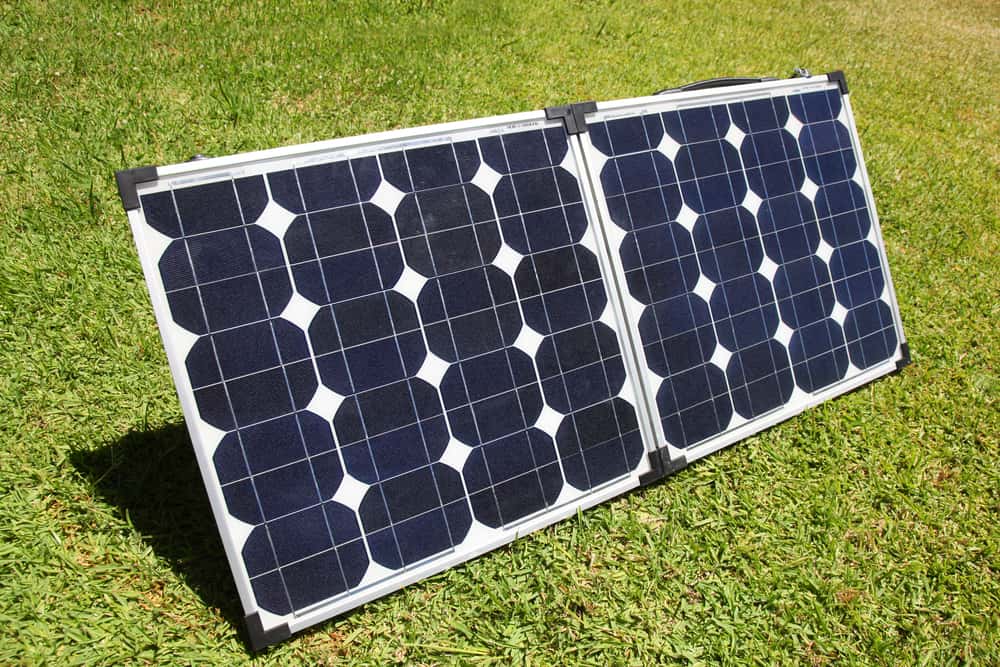
Guns and Ammo
Many people say you don’t need a gun or ammo in an inch bag. You may still have to deal with bears or other wild animals. In those cases, a gun can save your life. Even if you never need to use a gun, it makes sense to have the following items:
A revolver – they are easier to maintain and last longer than semi-auto pistols. As with any other gun, make sure that you can shoot well. Some aides can help you deal with weak wrists or other problems.
A shotgun – it is easier to load the shells with gravel or other materials.
Portable Reloading Kit – make sure you have a reloading press that fits each weapon you bring along. Ideally, each person in your group will agree on gun models, and you will be able to narrow it down to 3 or 4.
Cleaning Kits – make sure you can keep your guns in good condition.
Spare Parts – it never hurts to keep parts kits for things that might wear out or break.
Gun Braces – even if your hands, wrists, and shoulders are fine now, age can change that. Keep braces onhand that will support your wrists, and other joints. At least, if you have an injury, it will not prevent you from using guns.
Personal Hygiene
Today, most people are used to disposable personal care items. Toilet paper and similar products do not last long. They are also bulky and may not hold up well in wet or damp weather. This is one area where you can bring along a few disposable items. Within a few days, though, you will have to adapt to other means. Here are the items you should bring along for personal hygiene:
Adaption Phase – toilet paper, toothbrush, toothpaste, soap, washrag. Some of these items may last for a few months. At some point, you will have to make them on your own.
For Routine Use:
Family Cloths – Use in place of toilet paper.
Nail Clippers – you may not think much about this right now. Nails that are too long can lead to a lot of problems. For example, your nails can tear from the quick or split. The last thing you want is an infection from a nail injury. Keeping your nails short will prevent these injuries.
Scissors – Use for cutting your hair and other grooming needs.
Brush and Comb – even if you cut your hair short, it doesn’t hurt to have a brush and comb.
Beard Trimmer (for Men) – A manual trimmer will be of use for keeping your beard clean. Food spills, knots, and tangles can all lead to infections.
Bucket for Family Cloths – you will need to wash family cloths often in disinfectant.
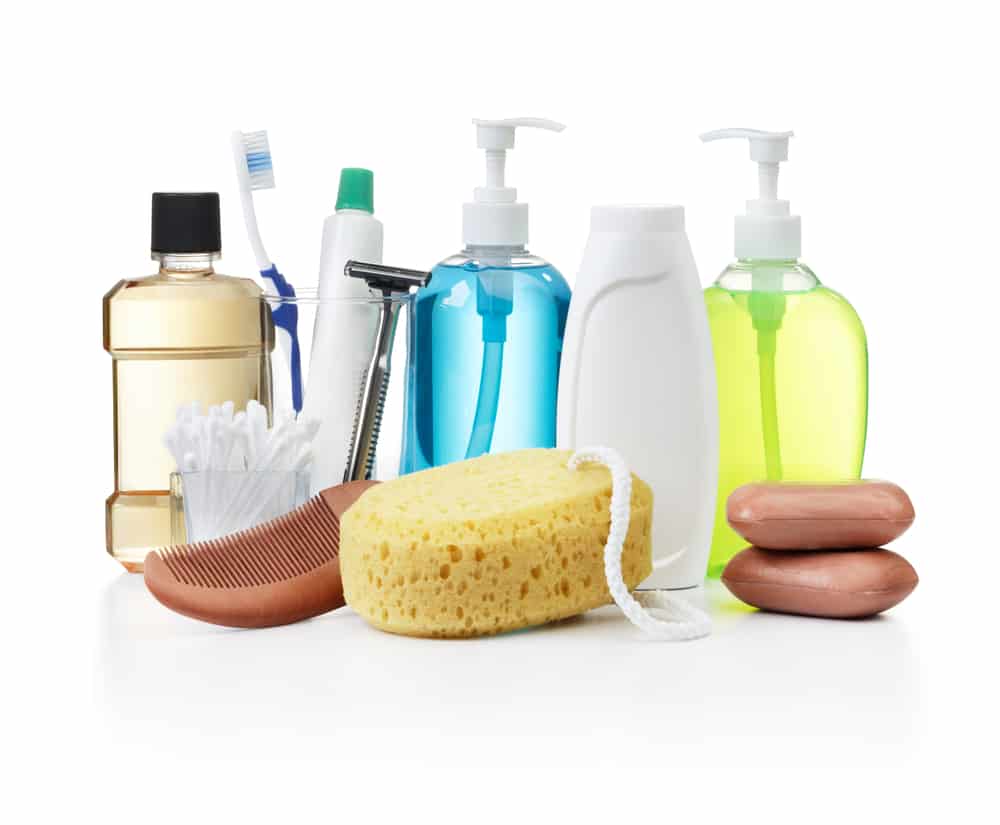
Miscellaneous
Some things don’t fit in the above list. You still need to carry them.
CPVC Pipe, Cleaner, and Glue – Can be used to make hand water pumps, snowshoes, and more.
Duct Tape – Bring as much as you can carry.
Paracord – try to keep a few sizes.
Construction Grade Garbage Bags – can be used as a rain barrier, and much more.
Other Plastic Bags – Bring along Ziplocs in many sizes.
Identity Papers – Bring your driver’s license, passport, medical records, and bank cards.
Notepad and Pencil – for taking notes.
Misc. Tools and Fasteners – Carabiners, pulleys, and an auger. A socket set, wrenches, pliers, hammer, crowbar, wire cutters, and lubricants are also useful.
Water Proof Box – use this for papers and books.
Printed Books – there are a few vital books.
- outdoor survival manual that covers first aid, hunting, shelter, and more
- Complete human health and disease
- complete health and diseases of animals and fish you plan to hunt
- medicinal plants in the target area
- edible plants
Gardening Kit – bring heirloom seeds for foods you might grow. It should also include a hand trowel and claw.
Sewing Kit – do not forget sturdy thread and needles with different-sized holes. If you are going to tan hides or use furs, then bring along needles and other tools to work with them.
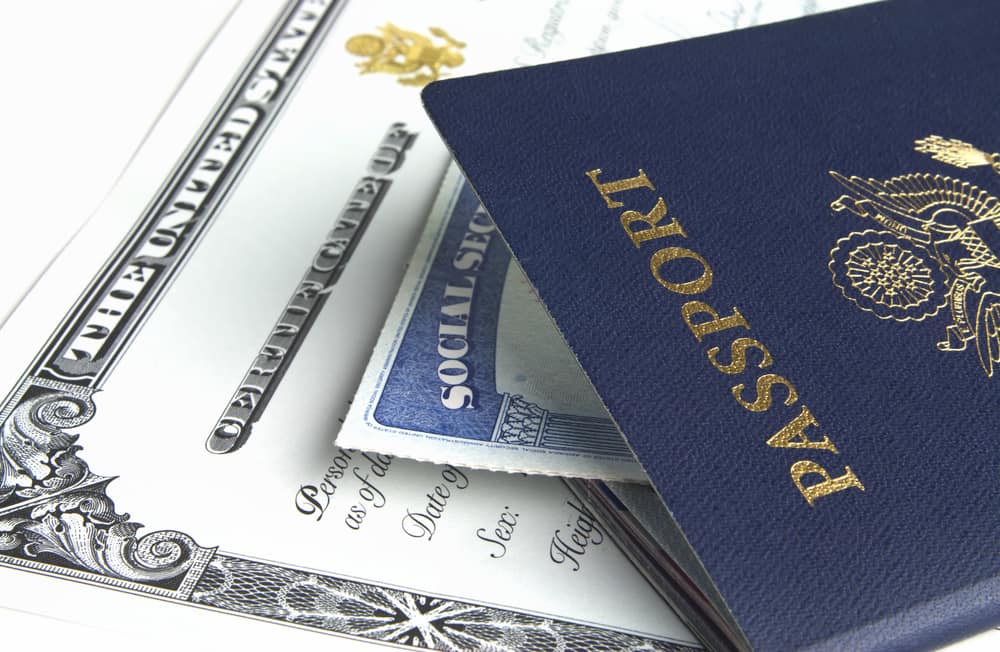
Conclusion
As you can see, an Inch Bag covers a lot of things. It will take time to choose the best items. You should also expect to spend even more time practicing. This includes spending a lot of time with the people you plan to travel with.
For our ancestors, living outdoors was a way of life. They gained skills from when they were children. These people also developed relationships that enabled them to trust and work together in challenging settings. Do not expect to be able to use survive with an inch bag unless you have spent years honing your basic outdoor living skills.

